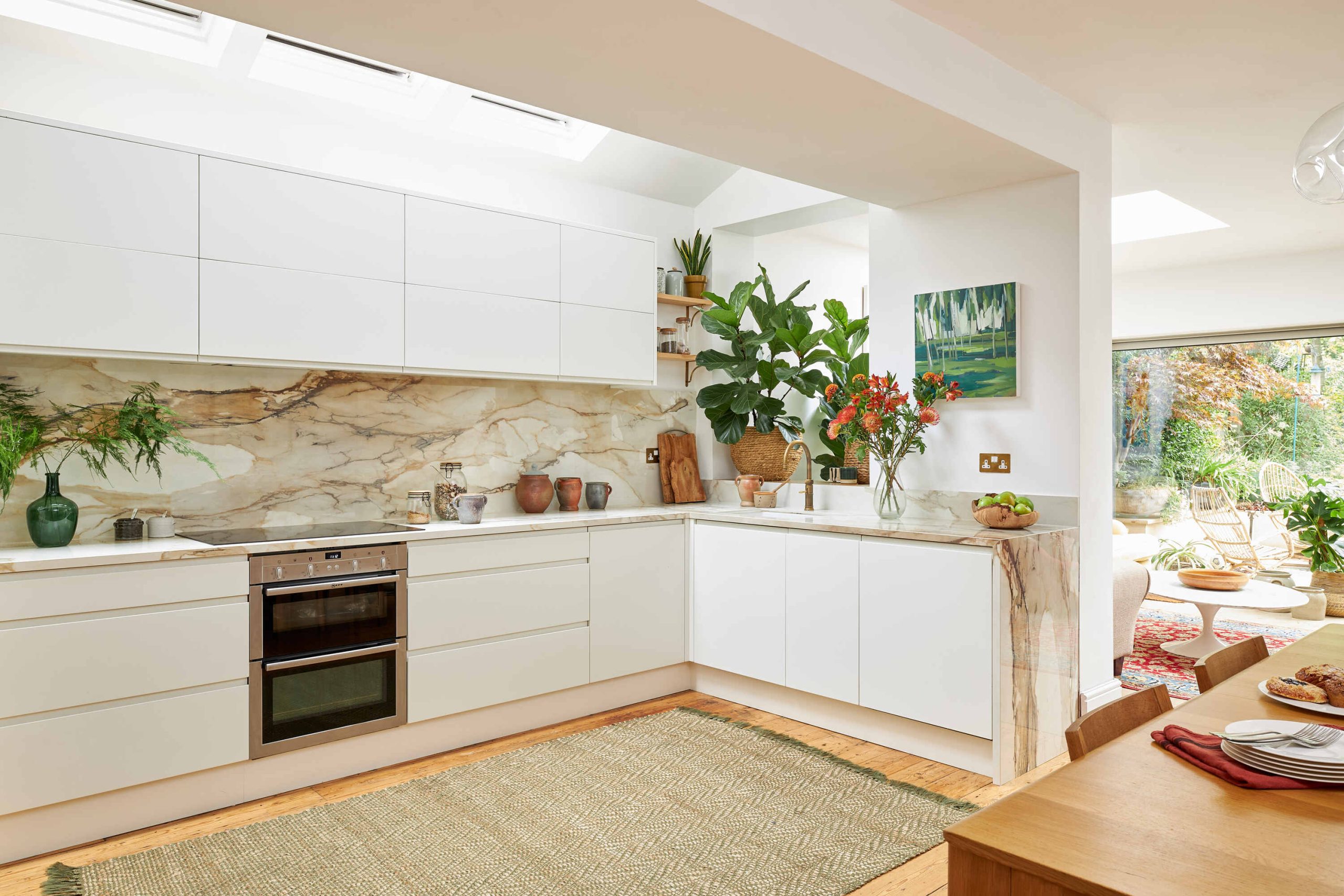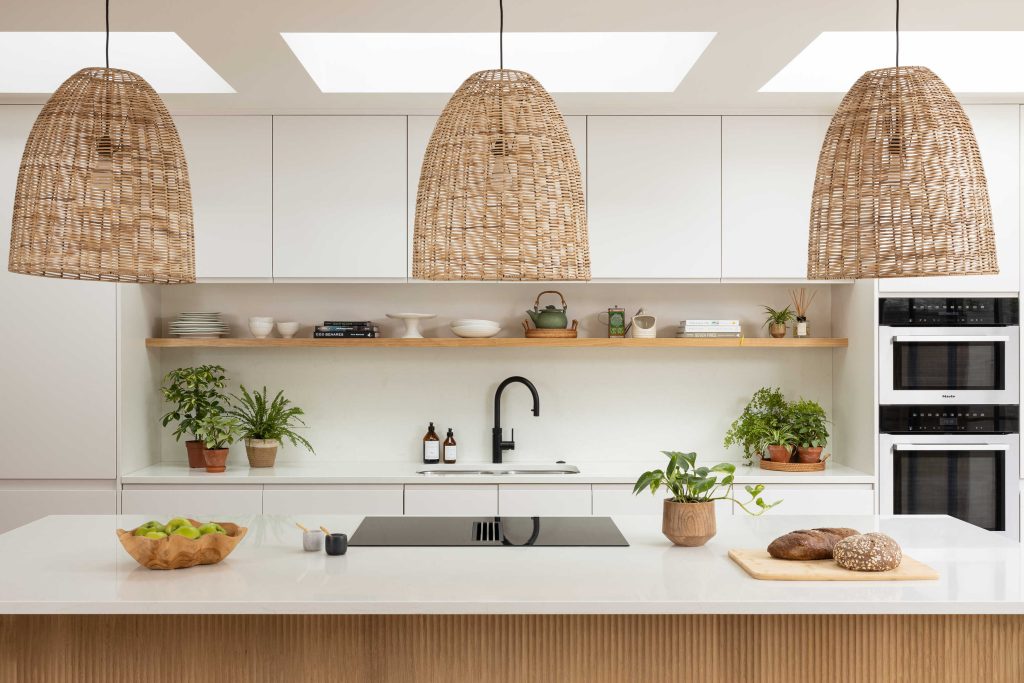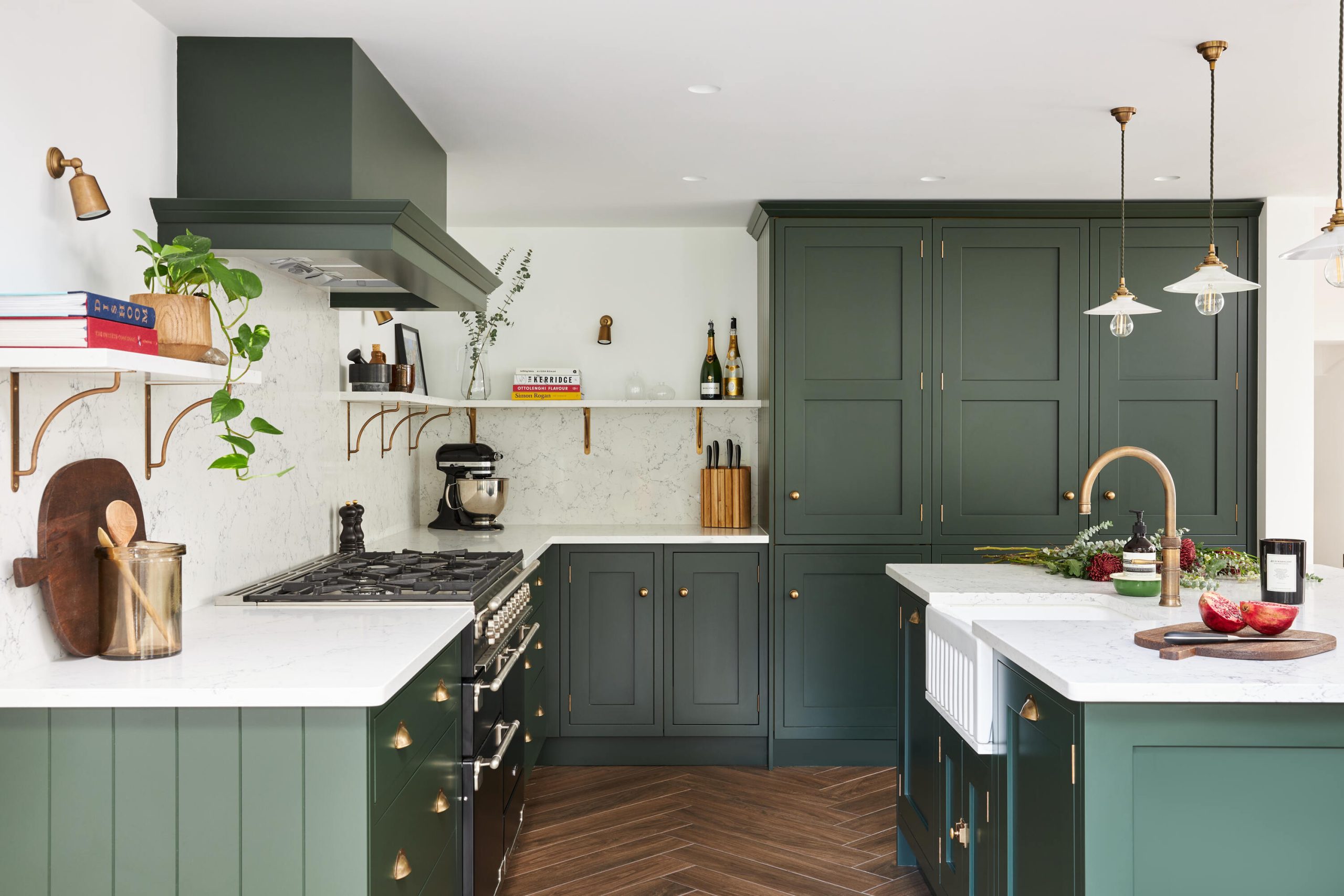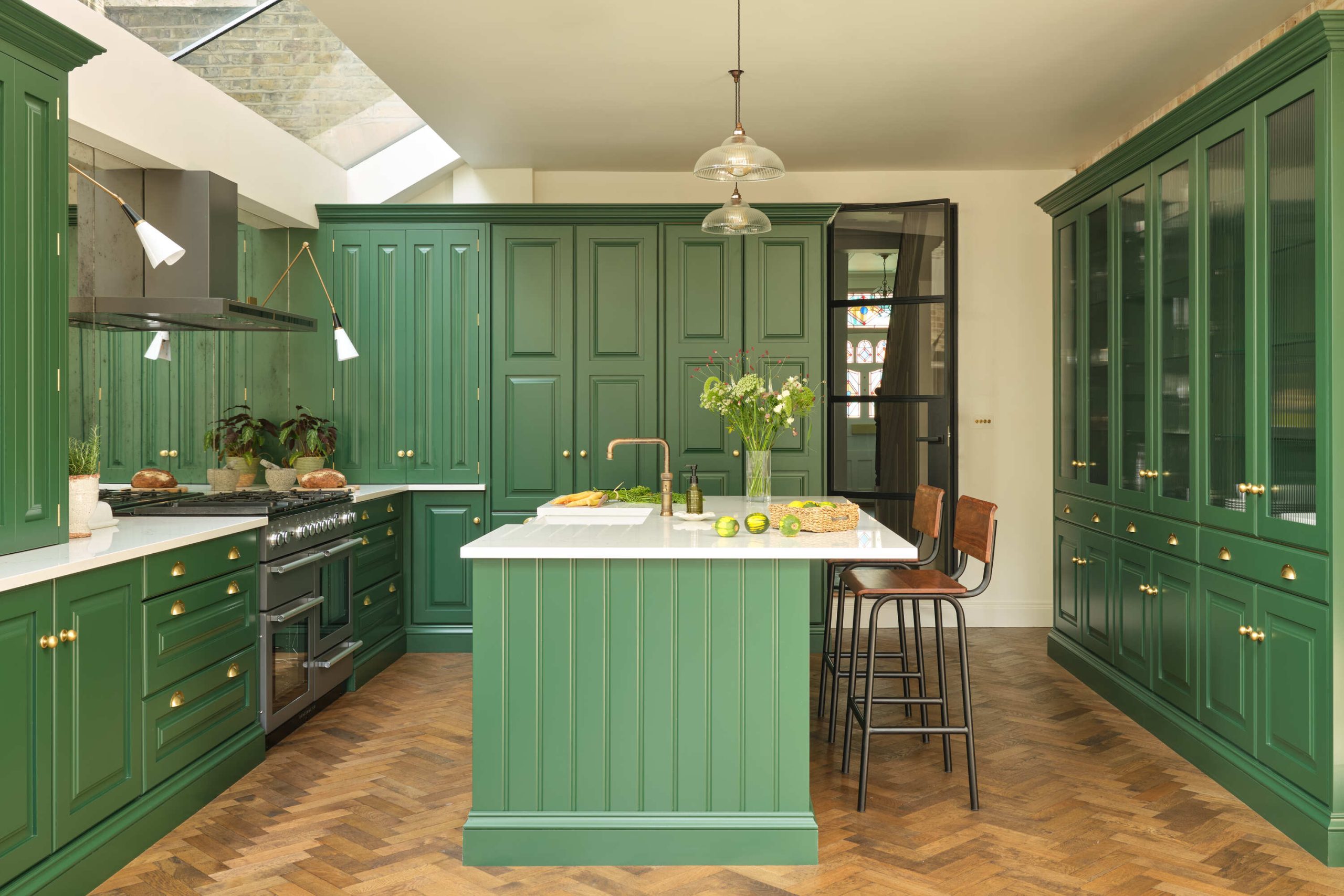There is a reason why Biophilic design is trending. People want to feel more connected to nature and the outside world in their every-day spaces – including their kitchens. In this article we will examine how biophilic design principles, such as natural light, shapes and patterns, can create an inviting and cohesive space. And we’ll share practical tips for integrating these elements to create a scheme in your home that nurtures both mind and soul.

Rooted in the idea that humans have an inherent need to interact with the natural environment, biophilic design aims to create spaces that improve wellbeing by incorporating natural elements into built designs. A prime example is the Barbican Centre in London. Despite its brutalist exterior, the Barbican integrates authentic and artificial lakes, a vast array of wildlife and a lush conservatory with over 1,500 plant species.

The natural environment principle integrates elements from the untouched world into interior design. This includes using earthy colours, maximising light, incorporating plants and featuring nature-inspired imagery. These touches create a serene and grounded scheme, enhancing your outdoor connection.
Drawing inspiration from the environment, natural shapes and patterns bring elegance and harmony to interiors. Raw, unprocessed forms add tranquillity and balance, while intricate patterns mirror the ecosystem’s rhythms, adding depth and character.
Complementing these elements, daylight brightens up and warms the space, creating a seamless inside-out connection.
Why do we feel so much better after being in nature? The essence of earth-centred interiors lies in restoring the relationship between humans and the natural world. By blending modern design with the beauty of nature, you can create a space that feels both contemporary and grounded in the natural world. Biophilic design can improve air quality, reduce stress, increase creativity and help you feel more present.
Here’s how you can effortlessly introduce biophilic principles into your bespoke kitchen, creating a scheme that feels good and improves your well-being:

Plenty of sunlight is a cornerstone of biophilic design, crucial for enhancing health and well-being. Integrating features such as floor-to-ceiling windows or glass doors allows you to invite abundant natural light into your kitchen, fostering an uplifting environment. This interplay elevates the space aesthetically and aligns with our natural rhythms, boosting mood and productivity throughout the day
With their seamless cabinetry, hand-finished to perfection by our skilled craftsmen, our bespoke handleless kitchens allow light to flow effortlessly, and often lend themselves to brighter spaces.
For a touch of modern sophistication, our contemporary kitchens feature clean lines and versatile designs, ideal for open-plan and compact spaces. They blend luxury with practicality with stylish and modern details, infusing your biophilic kitchen with a glamorous edge.

Integrating wood into your kitchen design is a powerful and effective way to integrate biophilic principles. Wood introduces organic textures and patterns that foster a deep connection to nature, creating a calming and sophisticated atmosphere in your space.
Wood kitchen elements to consider:

Our artisan kitchens exemplify the timeless charm of wood. Each piece is selected and handcrafted to honour traditional techniques, creating a warm, nature-inspired atmosphere with meticulously carved cabinetry and precisely fitted joints.
Alternatively, our shaker-style kitchens combine traditional craftsmanship with modern functionality. They seamlessly integrate into classic and contemporary settings with clean lines and high-quality wooden finishes.

Houseplants are integral to biophilic design, immediately boosting your kitchen with greenery and promoting well-being. They purify the air, improve wellness and infuse your space with a refreshing touch of nature.
Benefits of houseplants:

Why not take it one step further and choose a paint shade that complements your greenery? Our Shaker-style kitchens like the one above, painted in soothing green tones, provide an ideal backdrop for incorporating live plants.

Textures and fibres enrich the sensory experience in organic design, reflecting nature’s diversity. Materials like stone, marble and wicker add tactile depth, connecting the space to the natural world.
Consider authentic flagstone flooring or wool rugs for a soothing touch, resonating with biophilic and Hygge principles. Likewise, wood shelves and stone countertops exude organic exquisiteness. With their streamlined, handleless design, our pure kitchens pair seamlessly with these organic materials.
We carefully source each material at John Lewis of Hungerford, ensuring the highest quality and longevity. At the same time, our artisans bring their expertise to every finish and detail, creating a truly bespoke kitchen experience.

Far from being a fleeting trend, earthy tones create a comforting and serene atmosphere, reflecting nature indoors. Our artisan kitchens, with their classic craftsmanship and warm, earthy hues, perfectly complement this approach, enhancing biophilic design and creating a timeless, inviting space
Consider these options for your kitchen:
See our full colour collection for more inspiration.
To further enhance your kitchen’s connection to nature, consider integrating water features and biomorphic patterns:
Our contemporary kitchens can seamlessly incorporate these elements. Their modern design complements the fluidity of water features and the intrinsic beauty of biomorphic patterns, blending contemporary sophistication with a touch of nature.
At John Lewis of Hungerford, our experts blend sophisticated design with natural elements, crafting kitchens that are as enduring as they are inspiring. Ready to infuse your home with biophilic principles? Start your journey towards a kitchen that nurtures both style and well-being today. Download our brochure or book a design consultation.
We value your privacy
We use cookies to enhance your browsing experience, serve personalized ads or content, and analyze our traffic. By clicking “Accept All”, you consent to our use of cookies.